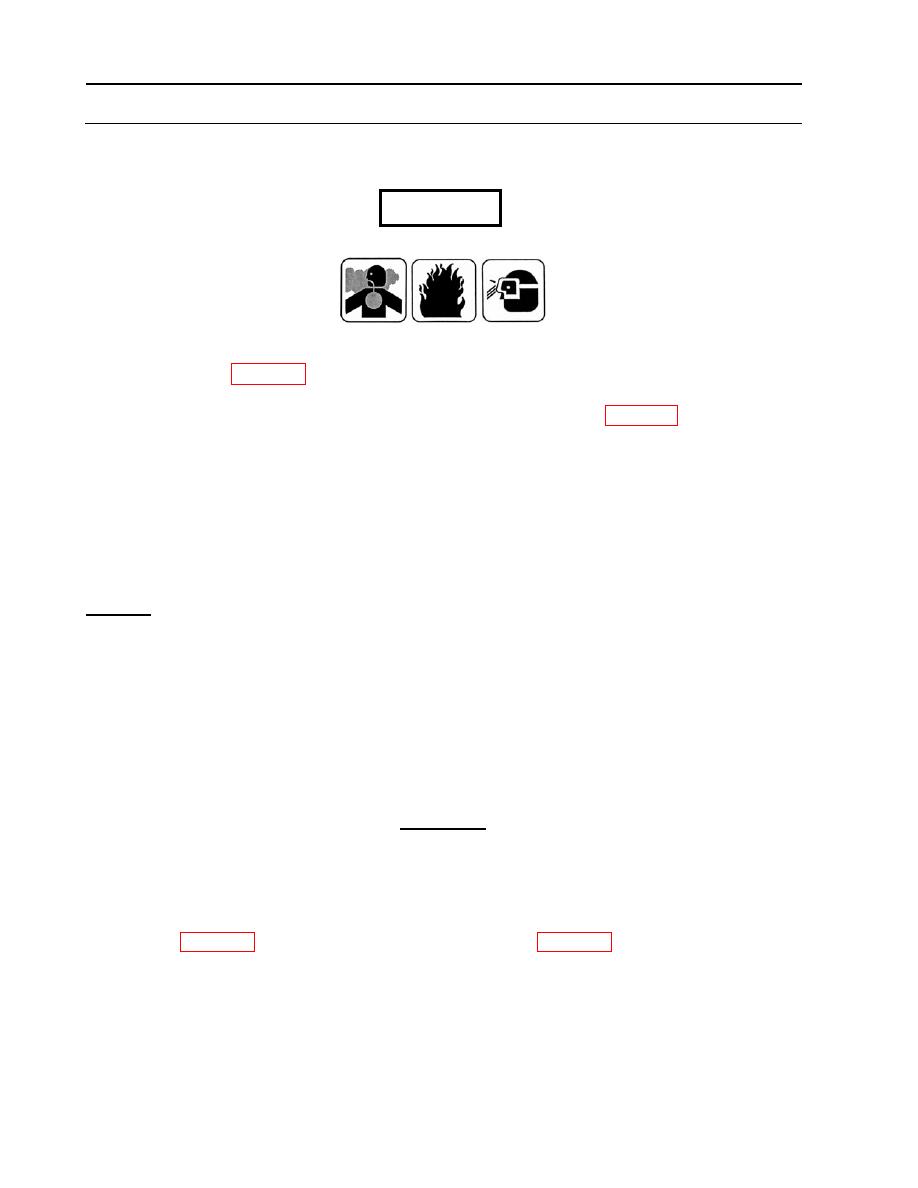
| Tweet |

Custom Search
|
|

|
||
 TM 9-2815-220-24
STANDARD MAINTENANCE INSTRUCTIONS
0028 00
CLEANING (Continued)
Inspect all air and fluid openings, lines, and hoses. Make sure they are capped.
WARNING
Cleaning Compound Solvent
1. Clean all parts before inspections, checks, after repair, and before assembly. Use cleaning
solvent (item 8, WP 0173) or approved cleaner. Remove gum, varnish, and sealant compound
by soaking parts in cleaning solvent and scrubbing with a soft bristle brush. Clean thoroughly
to remove any dirt and residue. Dry parts with wiping rag (item 26, WP 0173).
2. Keep hands free of grease; grease collects dirt.
3. Except where specified, never use abrasives, files, scrapers, wire brushes, or sharp tools on
surfaces where the finish is important to the operation or sealing of parts.
4. Apply a thin film of clean oil to parts that have been cleaned and dried to prevent rusting.
5. Never use lye or caustic solutions that will corrode or etch metal surfaces.
6. After cleaning, cover and wrap parts to protect from dirt.
Bearings
Bearings require special attention for cleaning and oiling.
NOTE
Do not immerse sealed-type ball bearings in cleaning solvent or
hot oil. Entrance of cleaning agent will destroy lubricants sealed in
bearing at time of manufacture. Loss of lubricant will result in
premature failure of bearing and possible damage to the engine.
1. Remove the surface dirt, oil or grease from the bearings.
CAUTION
Do not use compressed air for cleaning or drying ball or needle
bearings. Damage to bearings will result from spinning of bearing by
air blast.
2. For sealed-type ball bearings, clean by wiping the exterior surfaces with a clean cloth
3. For other bearings, place in hot oil (about 150 F) to loosen congealed oil and grease.
4. After cleaning, wrap the bearings tightly in oiled or waxed paper until inspection and
assembly.
5. Refer to TM 9-214, Inspection, Care, and Maintenance of Antifriction Bearings, for
information on inspection, care, and maintenance of bearings.
WP 0028 00-4
|
||
 |
||